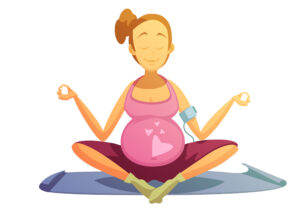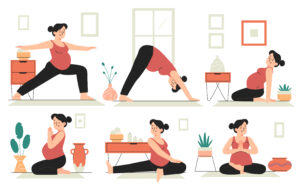Sleeping Positions to Induce Labor
The wait for the final few days before meeting a newborn can sometimes overshadow the anticipation and excitement of meeting one. Days turn into nights and the urge to rush labor is palpable among expectant mothers. Many theories and practices have been whispered from generation to generation to offer solutions to hasten the onset of labor. Among these age-old suggestions, sleeping positions have received a lot of attention. The premise is straightforward : Does changing the way an expectant mother sleeps help induce labor? Read about Sleeping Positions to Induce Labor.
Sleeping Positions and Their Role
Sleeping positions may seem like nothing but are very important during pregnancy. Not just for the comfort of the expecting mother but potentially for the determination of when and how labor might begin. The way a pregnant woman rests can affect the orientation of her baby. This, in turn, may enable labor initiation. For example, some positions may allow the baby to descend into the pelvis. Pressing the head against the cervix may induce dilation and effacement, the first steps toward labor. Thus, sleep is needed even beyond rest and may be used to induce labor in nature.
The Anatomy of Labor Induction
The anatomy of labor induction is crucial to understand the effects of sleeping positions. It is the culmination of pregnancy and labor and involves a complex ballet of anatomical and physiological components. One of the crucial players is the cervix. Whenever labor is imminent, the cervix softens, dilates and shortens to permit birth canal access to the baby. Concurrently, the position of the baby, ideally head-down and facing the mother’s spine, can optimize this process. This alignment is called the’ anterior position,’ because the baby’s head fits in the curve of the pelvis. So how does sleep fit in? Certain resting postures may induce the baby to assume this anterior position, priming the body for labor.
Sleeping Position to Get Periods Early
Sleeping Positions to Try
With the due date approaching, the idea of expediting labor is attractive. Other than medical intervention and natural remedies, some sleeping positions have been promoted as ways to induce labor to begin. These positions help bring the baby in the proper position, facilitate cervical dilation, and create an optimal environment for labor. None of these positions guarantees the beginning of labor, but they may create conditions that might encourage it. So, in case you are in the waiting game, looking for ways to induce labor naturally, here is in which you can begin.
Left-side Position
Sleeping on the left side has been a practiced for pregnant women in general and especially in the late stages. But why? Firstly, this position promotes blood flow so that the baby gets enough nutrients and oxygen. It is also thought to help guide the baby into the anterior position – important for easier labor. Moreover, sleeping on the left can reduce swelling by improving kidney function. Therefore, this position may hasten labor but may also keep the mother and baby healthy. Here you can read about: Best Sleeping Position for Blood Circulation
The Squatting Posture
Although not exactly a sleeping position, squatting helps you induce labor. Squatting may open the pelvis enough for the baby to descend. This downward motion may then exert pressure on the cervix and accelerate dilation. It may help to regularly do a deep squat. But you need to remember comfort. In case needed, you can use pillows or a buddy to support yourself.
The Elevated Hips Technique
After intercourse, which is another method some consider to naturally induce labor, elevating the hips can be advantageous. This position keeps the semen, which contains prostaglandins (chemicals that soften the cervix), close to the cervix longer. This entails lying on your back and putting a pillow or pillow beneath your hips to lift them slightly. This position should last about 20 minutes. Constantly consult your doctor before trying any technique.
Butterfly Stretch
Another non-sleeping position is this one. Sitting on the floor, join the bottoms of your feet together and let your knees fall out, making a butterfly wing look with your legs. This stretch can open your pelvis and relax the pelvic joints and muscles. As with the squatting posture, the butterfly stretch may move the baby deeper into the pelvis to prepare you for labor. Do this stretch every day as you near your due date – but listen to your body and be comfortable.

Positions to Avoid
Prepare for labor by knowing both good positions and those that could be harmful. With your infant developing and your entire body evolving in preparation for birth, some postures could cause discomfort or even compromise the safety of you and your unborn child. Knowing which positions to avoid puts you in a better position for a more comfortable, safer labor experience.
Lying Down on Your Back
Sitting flat on your back following a long day can be a calming position. But this posture can be problematic in later stages of pregnancy. Lying down, the growing uterus presses on the large vein of the inferior vena cava, preventing blood flow back on the heart. This restricted flow may cause dizziness, breathlessness, or fainting spells. Moreover, the additional weight could cause far more backaches because of lumbar spine stress. Transitioning to side sleeping (mainly left side) can avoid these problems and promote more restful sleep.
Right-side Sleep
Sleeping on the right side isn’t always hazardous, but is not generally advised during late pregnancy. The major concern is the liver located on the left side of the abdomen. Constant pressure on the liver is not good, and sleeping on your right can do this. It isn’t a major hazard, but sleeping left-side may help in these critical months.
Other Tips
The many guidelines and advice associated with pregnancy can be overwhelming. While you work on the right sleeping positions, there are other general practices that can improve your comfort. For example, a pregnancy pillow can be a lifesaver. These ergonomically shaped cushions offer customised support so that you can change positions during sleep as you need support.
Movement and Exercise
The emphasis on the right resting positions does not mean that movement and exercise are less important during pregnancy. Keeping active promotes muscle tone, circulation and stamina – all of which are important during labor. Simple exercises such as walking, prenatal yoga and gentle stretching can make huge changes. These activities are not only about getting fit physically; they include non-aerobic activities as well. They also improve mental health, lower stress levels and boost spirits.

Listening to Your Body
Although there are infinite amounts of advice and infinite guidelines these days, your best advice would be to listen to your body. Every pregnancy is individual and what works for one might not do the job for someone else. If you ever get uncomfortable, even in the recommended positions, make adjustments. Believe in your intuition, give consideration to your body’s feedback and always speak to your healthcare provider about any doubts. Your comfort and safety and that of your baby remain paramount.
You might be interested in
Back sleeping could delay labor?
While the exact mechanism is debated, lying flat on your back may reduce optimal blood flow and possibly influence labor.
How often should I take these positions?
Comfort is the key. Do it often if it feels right. But always put well-being before practice.
But is the left-side position best for inducing labor?
Others say it helps with blood flow and baby positioning. But everyone has different experiences.
Do exercises really help with labor induction?
Movement may help the baby settle into the right position, and may help with labor.
Should sleeping positions be my only method of labor induction?
It is part of the puzzle. For a more holistic approach, consult healthcare professionals.




